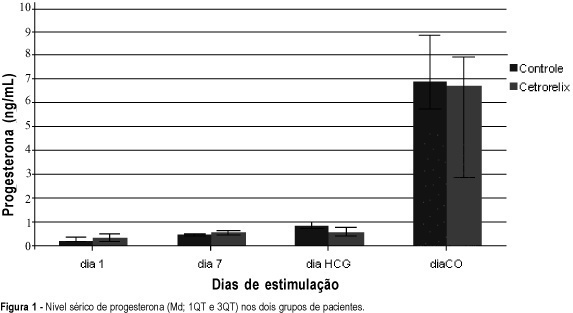Revista Brasileira de Ginecologia e Obstetrícia. 2003;25(8):563-569

PURPOSE: to verify the efficacy of a single subcutaneous dose of cetrorelix acetate to avoid premature ovulation in assisted fertilization cycles. METHODS: this is a prospective, controlled and randomized study, with 20 women undergoing ovarian stimulation for assisted fertilization, 10 of whom were submitted to classical GnRH agonist protocol (control group) while 10 utilized a 3-mg subcutaneous dose of the GnRH antagonist on the 7th day of ovarian stimulation (cetrorelix group). Serum FSH, LH, estradiol and progesterone concentrations were assessed on the first, seventh, HCG administration and oocyte retrieval days. Both groups were compared for pituitary suppression (progesterone concentration on HCG day) and assisted fertilization cycle performance (gonadotropin ampoules utilized, follicles over 18 mm, retrieved oocytes, fertilization, implantation and pregnancy rates), utilizing Mann-Whitney and Fisher exact tests. RESULTS: no significant difference was observed between control and cetrorelix groups, respectively, for medians of age (31.5 and 34 years), body mass index (24 and 22), gonadotropin ampoles utilized (34 and 32), follicles over 18 mm (3.5 and 3.3), retrieved oocytes (11 and 5), obtained embryos (4 and 3), fertilization (93,7 and 60%, p=0.07) and pregnancy rates (50 and 60%, p=0.07). Efficient pituitary blockade through the ovarian stimulation period was observed for both groups. CONCLUSIONS: these results confirm the efficacy of a 3-mg dose of cetrorelix acetate to prevent premature ovulation in patients undergoing assisted fertilization and suggest a tendency towards a smaller number of embryos and fertilization rates in the cetrorelix group than in the control group. Implantation and pregnancy rates were similar between groups. Other prospective studies with a greater number of patients should be performed to confirm these results.
Search
Search in:


Comments